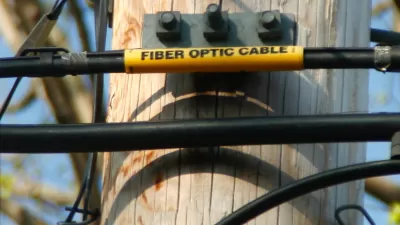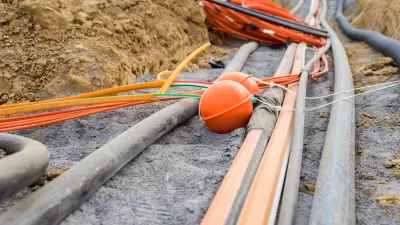As connectivity becomes increasingly important to everyday life, policymakers at all levels can take action to streamline broadband infrastructure projects and improve internet access for all communities.

As the federal government prepares to distribute billions in funding to broadband infrastructure, among other projects, Bruce P. Mehlman outlines three important principles for ensuring "maximum return on our broadband investments."
First, Mehlman cautions that "one size does not fit all" when it comes to infrastructure investments. "Policymakers focusing on broadband connectivity need to consider a myriad of conditions, from population density, average incomes, geology, and topography to the range of competitive offerings already available, when determining program design and objectives."
Second, Mehlman recommends close coordination between federal, state, and local officials, as well as private sector providers who bring "critical knowledge." According to Mehlman, "States can benefit from appointing 'broadband tzars' to focus maniacally on closing digital divides, investigate availability shortcomings and their causes, proselytize adoption, and actively coordinate efforts among all players."
Mehlman also recommends prioritizing connectivity and streamlining the approval process for broadband infrastructure projects. "Unfortunately, it’s a lot more expensive to build infrastructure in the United States than in most other countries. While multiple reasons explain America’s higher costs and longer delays, bureaucratic inertia stands as one of the most significant barriers to successful broadband deployment."
Mehlman concludes that "If the great broadband buildout is to succeed, policymakers need to understand that Congress appropriating the money is not the end, but merely the end of the beginning."
FULL STORY: This is America’s broadband moment. Don’t screw it up

Study: Maui’s Plan to Convert Vacation Rentals to Long-Term Housing Could Cause Nearly $1 Billion Economic Loss
The plan would reduce visitor accommodation by 25,% resulting in 1,900 jobs lost.

North Texas Transit Leaders Tout Benefits of TOD for Growing Region
At a summit focused on transit-oriented development, policymakers discussed how North Texas’ expanded light rail system can serve as a tool for economic growth.

Why Should We Subsidize Public Transportation?
Many public transit agencies face financial stress due to rising costs, declining fare revenue, and declining subsidies. Transit advocates must provide a strong business case for increasing public transit funding.

How to Make US Trains Faster
Changes to boarding platforms and a switch to electric trains could improve U.S. passenger rail service without the added cost of high-speed rail.

Columbia’s Revitalized ‘Loop’ Is a Hub for Local Entrepreneurs
A focus on small businesses is helping a commercial corridor in Columbia, Missouri thrive.

Invasive Insect Threatens Minnesota’s Ash Forests
The Emerald Ash Borer is a rapidly spreading invasive pest threatening Minnesota’s ash trees, and homeowners are encouraged to plant diverse replacement species, avoid moving ash firewood, and monitor for signs of infestation.
Urban Design for Planners 1: Software Tools
This six-course series explores essential urban design concepts using open source software and equips planners with the tools they need to participate fully in the urban design process.
Planning for Universal Design
Learn the tools for implementing Universal Design in planning regulations.
City of Santa Clarita
Ascent Environmental
Institute for Housing and Urban Development Studies (IHS)
City of Grandview
Harvard GSD Executive Education
Toledo-Lucas County Plan Commissions
Salt Lake City
NYU Wagner Graduate School of Public Service





























